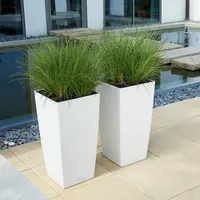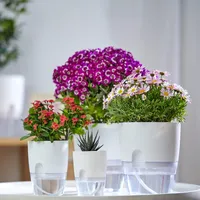What are self-watering planters and how do they work? Garden experts discuss their benefits
Find out the advantages and disadvantages of self-watering planters
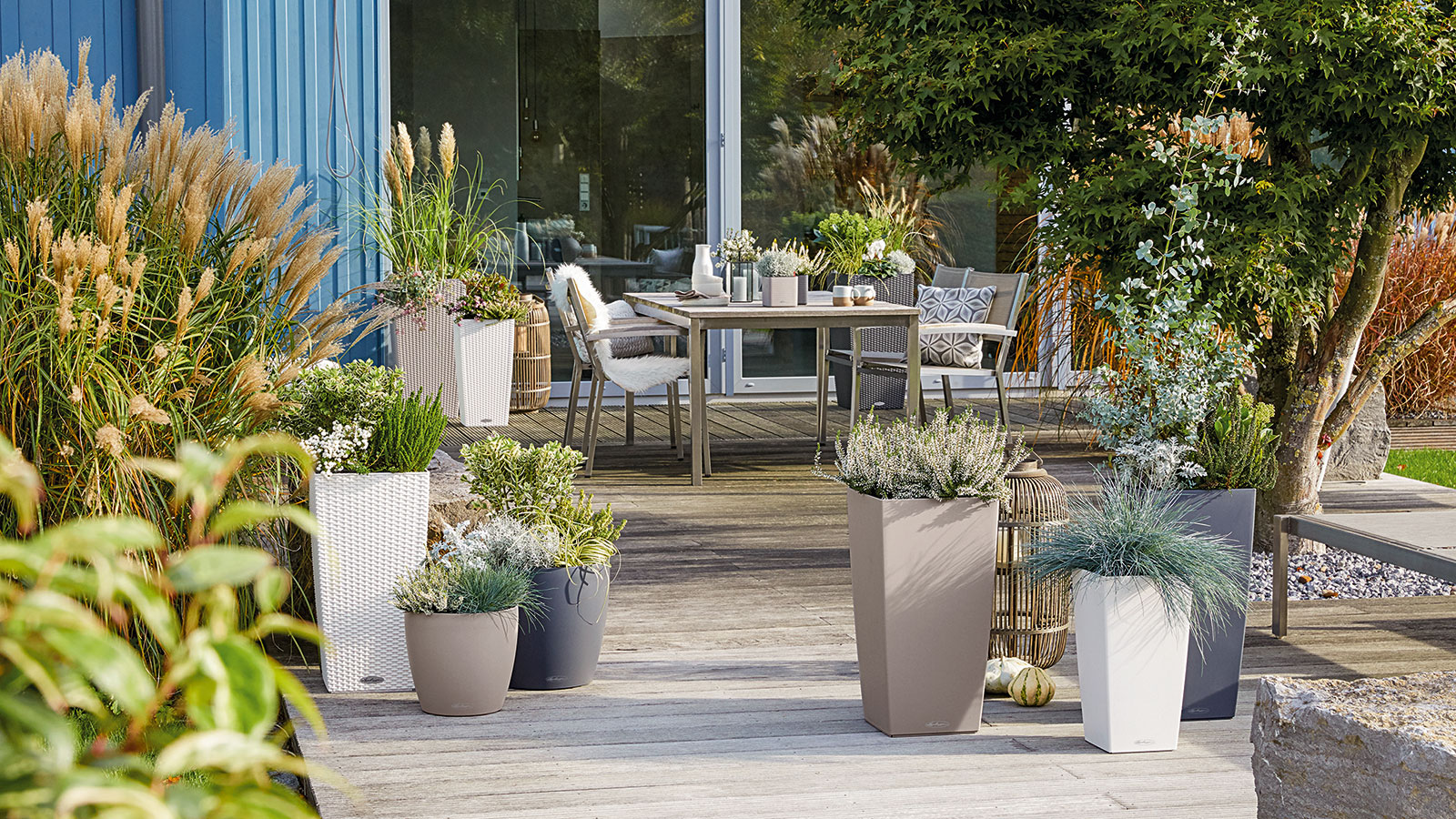

Self-watering planters help to remove some of the mystery that revolves around watering plants. Using these modern pots or planters means you can relax safely in the knowledge that your plants are getting a regular and consistent level of moisture.
Self-watering pots can come in many shapes and sizes and range from pricey high-end systems to more budget-friendly options. While not all plants are suitable, and the pots not ideal for use in all conditions, the self-watering systems are often more convenient.
Judging when to water plants can be a tricky thing to master, especially for novice gardeners, and utilizing such pots removes some of the gamble. We look at the advantages and disadvantages of self-watering planters and whether you should consider them for your plants.
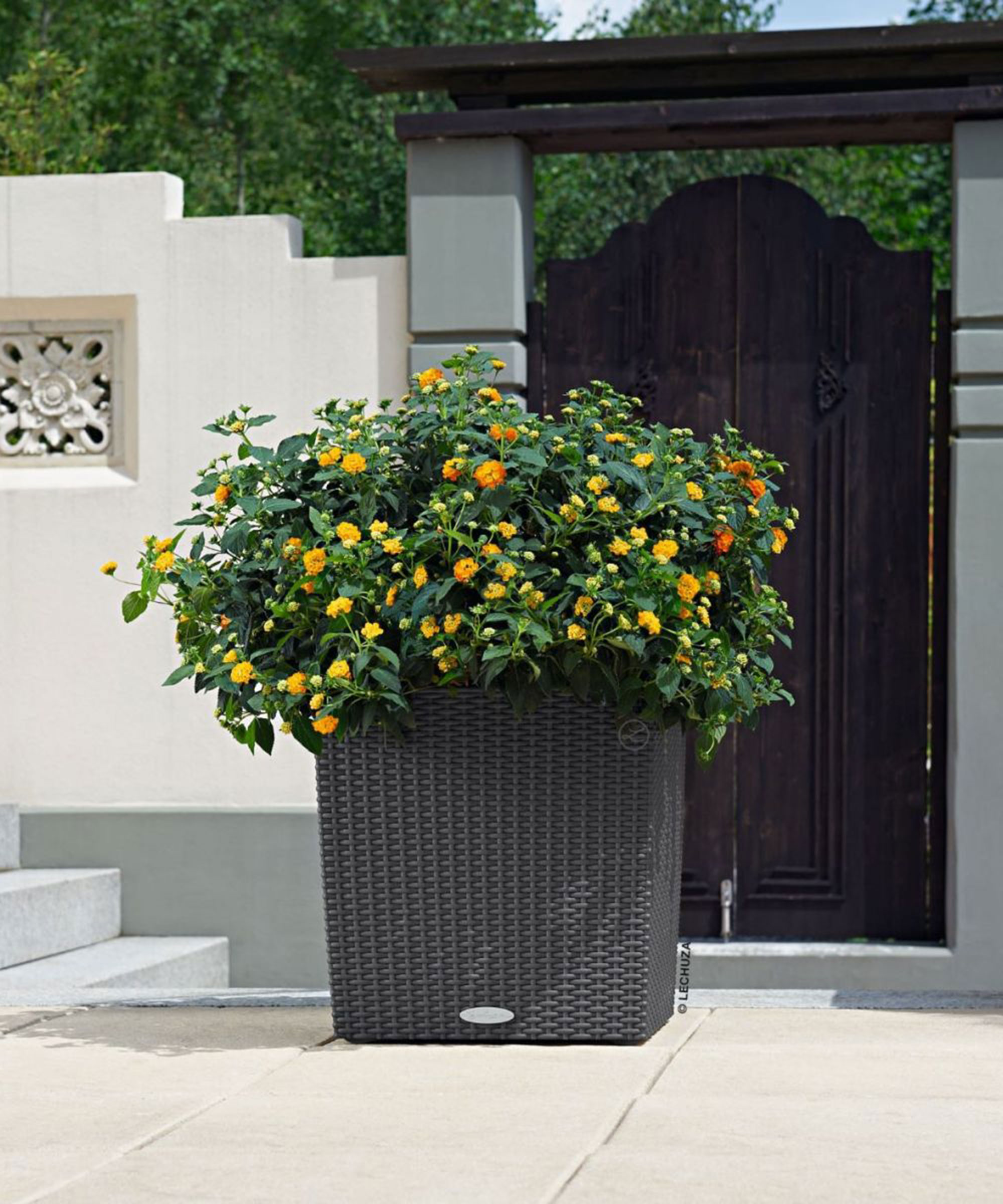
Self-watering planters can come as individual pots or larger containers. This Lechuza Cube Cottage self-watering planter comes in a range of sizes and is available from Amazon
What is a self-watering planter?
A self-watering planter is a pot or container that has a reservoir integrated into the design to provide plants with a steady supply of water from the bottom as needed. The built-in water reservoir usually supplies water to the plant’s roots via capillary action, also referred to as ‘wicking’, that sees the soil draw the water up against gravity.
These indoor and outdoor planters come in different sizes, colors, and materials to suit any budget, but the overall design principle tends to be universal. The top portion holds the potting soil and the bottom the water reservoir, also usually coming with an overflow pipe to remove the potential for over-watering. They can be a very efficient method for watering plants in containers.
Andrew Laurier, expert at Be Green, claims self-watering planters are ‘a modern solution designed to make gardening more convenient for plant enthusiasts’ thanks to their ‘clever mechanism’ which enables them to automatically provide plants with water.
He adds: ‘Self-watering pots provide a convenient and efficient solution for home gardeners seeking to simplify their plant care routine. With their automated watering mechanisms and extended watering intervals, these systems offer a hassle-free approach to maintaining healthy plants.’
Design expertise in your inbox – from inspiring decorating ideas and beautiful celebrity homes to practical gardening advice and shopping round-ups.
Although dependent on the water needs for each individual plant and the size of the water reservoir in your chosen self-watering pot, such systems tend to need filling every one to two weeks. The largest self-watering planters can be capable of lasting up to four weeks without being refilled, making them a useful way of watering plants while away on vacation without lots of fuss. Many planters feature a water indicator which shows when the water level is low and needs topping up.
Lechuza 13130 Cubico Color 30 | $93 at Amazon
This large self-watering planter is ideal for indoor or outside use. It features a classic shape, a water level indicator, and a drainage plug to allow excess water to escape when being used outdoors
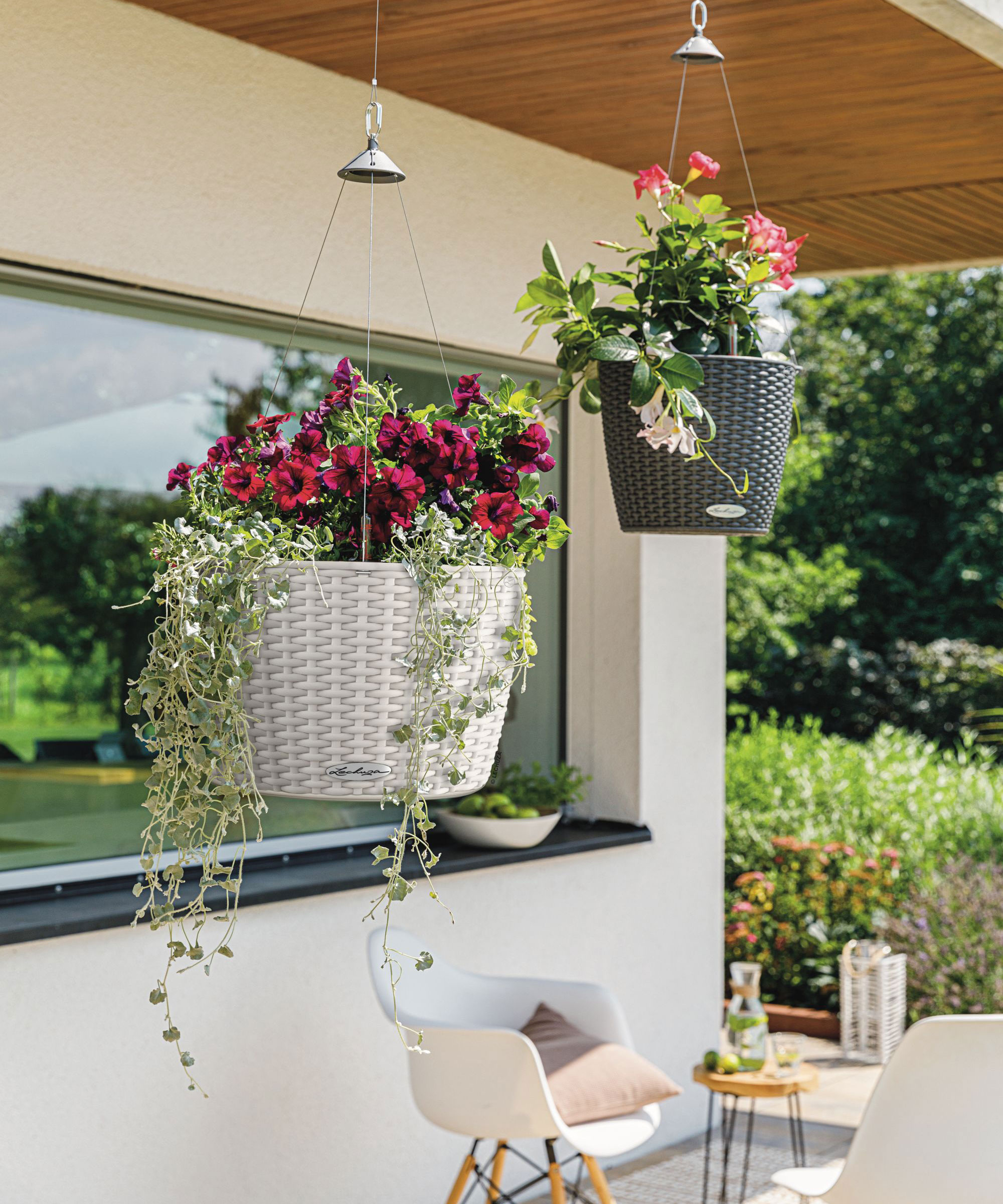
Self-watering planters can take some of the guesswork out of watering pots and hanging baskets. This Nido cottage self-watering hanging basket by Lechuza is available from Amazon
What are the benefits of self-watering planters?
Self-watering pots offer the advantage of a consistent level of moisture directly to the roots of plants. It means a potential boost in overall plant health, healthy roots, and also a higher yield when it comes to fruit or vegetables. You can even get windowsill self-watering planters, such as this pack of three planters on Amazon, that are perfect for indoor herbs. They allow the right amount of water to the plant’s roots as they need it, without any of the worry that often comes with watering.
There is also an added level of convenience to self-watering systems. Many people in the modern world have busy lives and such a planter can make plant care easier. It also means that if people are away, or on business, your plants will still get the water they need.
Lorraine Thompson, a florist and founder of Best Florist Review, claims a self-watering planter ‘removes the guesswork from watering frequency and volume, making it easy to adhere to a plant watering schedule’. She describes them as ‘an excellent pick’ for both beginners and amateurs who can easily make common garden watering mistakes, such as both over and under watering.
‘Because the reservoir system evaporates slowly and with less water loss than sprayed water on the plants, self-watering containers are particularly water-efficient,’ adds Lorraine.
‘Furthermore, fungi and disease are reduced since water is kept off the plants' leaves by nourishing them directly through their roots.’
As a self-watering planter is a closed loop system, it means any nutrients are kept within the system rather than leached out like in the ground. Therefore, any fertilizer remains in the system for longer and gives the plant more chance to utilize the vital nutrients on offer. A liquid feed, such as Miracle-Gro Pour & Feed Plant Food available at Amazon, can remain in the system and be available to plants longer than it would when applied to plants in the ground.

Lorraine Thompson is an experienced florist and the CEO and founder of bestfloristreview. The site uses independent reviewers in multiple countries to help people find trusted local florists and select the best flower shops in the region
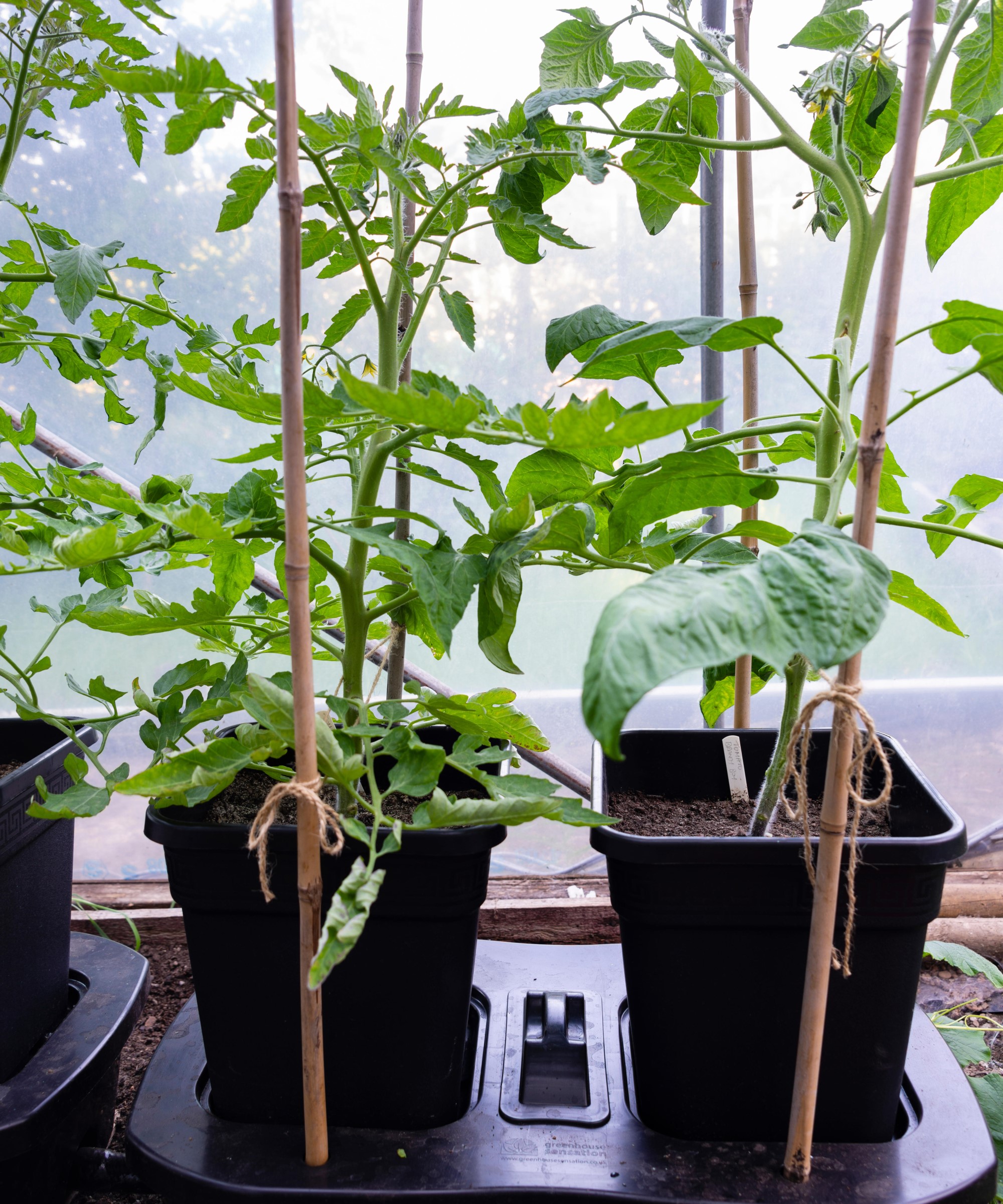
Crops such as tomatoes can benefit from being grown in a self-watering planter
ETGLCOZY 6/4.1/3.2 Inch Self Watering Planter Pots | $19.99 at Amazon
These set of five self-watering pots can allow up to 14 days of watering per fill and their clear view window allows you to monitor when it is time to fill the pot. They are ideal for indoor plants.
What disadvantages do self-watering planters have?
The first disadvantage of a self-watering planter is the higher price point than buying a standard pot or planter, though it could be argued that they can help reduce water bills and the need to buy replacement plants for ones killed by incorrect watering.
Self-watering planters are not ideal solutions for wet or humid environments. Such pots cannot detect environmental changes, such as rain or humidity, and will always continue to release water to the plants. There is the risk of waterlogging if you live in a very humid or wet area and plants could potentially be killed by sitting in very wet soil for long periods.
The water reservoir in a self-watering planter has the potential to turn into an ideal breeding ground for mosquitoes to lay their eggs. The insects like still and stagnant water so can be attracted to the reservoir if the water isn't changed often enough. Maybe consider planting mosquito repellent plants in the vicinity to deter mosquitoes from being attracted to the planter. As well as changing the water regularly, you also want to clean the pot often to reduce the risk of mold and mildew developing.
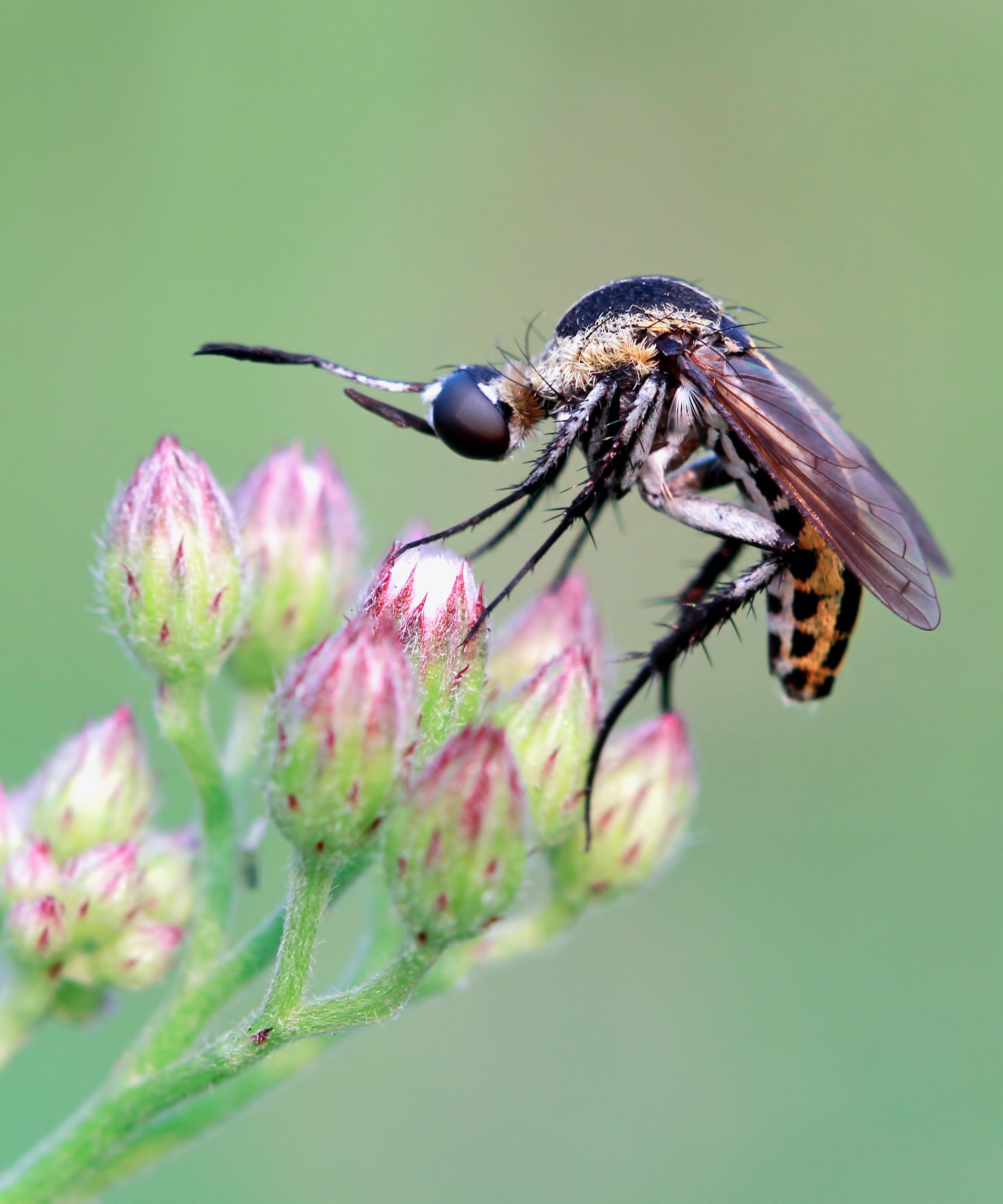
Mosquitoes can be attracted to the water reservoir if the planter is not regularly maintained
Are any plants not suitable for self-watering planters?
As advantageous as self-watering pots are, they are not suitable for all types of plants. In particular, plants that prefer drier conditions and desert-loving plants will not fare their best in such a self-watering system.
If you are growing cactus or caring for succulents, they are plants that want really good drainage and relish growing in a drier soil. Growing such plants in a self-watering pot, where they are subjected to a consistently moist potting medium, is not a good way of watering succulents or cactus and could leave them at risk of root rot.
Mediterranean herbs also prefer dry conditions and a really gritty well-draining soil, so would not be suited to a self-watering pot. This could be relevant if you are growing rosemary or growing lavender in pots. Many of these Mediterranean plants prefer drier conditions and like to dry out between waterings, and that is the opposite of how they would be living in a self-watering pot.
Large plants may not be suitable for such self-watering pots as their large root system can be too big for the container and the roots could make their way into the water reservoir. Such pots are also not ideal for thirsty plants that want very moist soil, even with a self-watering system it will never provide enough water for a very water-hungry plant.
FAQs
Do you need special soil for self-watering planters?
No, you do not need special soil for self-watering planters. Any quality potting compost can be used successfully in self-watering pots. If you work in a handful of homemade compost it can boost the nutrient levels in the soil, and also consider implementing a small amount of slow release fertilizer into the soil mix. Never reuse garden soil in pots or containers as it can hold far too much water and cause potential root rot in plants.
Do self-watering planters cause root rot?
It is doubtful that a self-watering planter would cause root rot in most circumstances, provided a suitable plant is put inside the pot or container. It is important to consider every individual plant's needs when deciding whether to opt for self-watering systems and to monitor the plant’s health. The most important thing in the bottom of any planter for drainage is holes, so make sure that any self-watering planter you choose has a drainage hole or overflow hole as part of its design. Without a way for excess moisture to drain away, it hugely increases any likelihood of root rot.
Self-watering planters do offer a wealth of advantages that make them very beneficial for new and amateur gardeners. They can take some of the stress and worry out of looking after plants, in particular indoor plants, and that can only be a good thing. As long as you ensure what you are planting in them will thrive there and keep an eye on topping up the reservoir, then you can reap the benefits of such self-watering planters and hopefully you will be as happy as your plants.

Drew has worked as a writer since 2008 and was also a professional gardener for many years. As a trained horticulturist, he worked in prestigious historic gardens, including Hanbury Hall and the world-famous Hidcote Manor Garden. He also spent time as a specialist kitchen gardener at Soho Farmhouse and Netherby Hall, where he grew vegetables, fruit, herbs, and cut flowers for restaurants. Drew has written for numerous print and online publications and is an allotment holder and garden blogger. He is shortlisted for the Digital Gardening Writer of the Year at the 2025 Garden Media Guild Awards.
